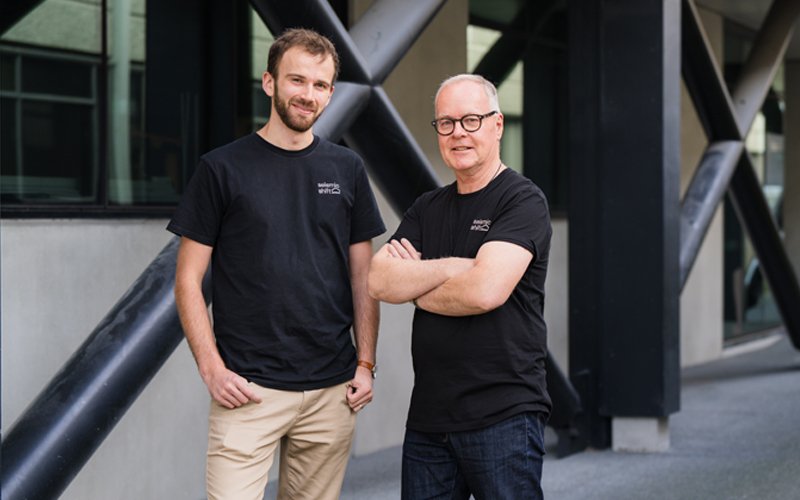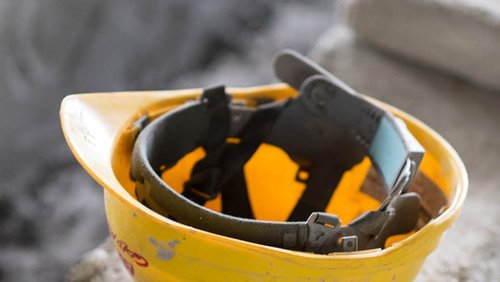25 Oct 2024
The 2011 Canterbury earthquake had a massive impact on all who were involved, and for two engineers who founded a company together despite being at different ends of the career spectrum, it continues to be a central driver of their work.
Structural engineers Ben Exton CMEngNZ CPEng IntPE(NZ) and Geoff Banks CMEngNZ IntPE(NZ) are at opposite ends of their careers. In 2016, new graduate Ben completed his internship at Geoff’s structural engineering company, Structex, which he founded 21 years ago. The pair have been working together ever since and in 2022, co-founded Seismic Shift. It’s an earthquake resilience research and development company intent on revolutionising how to protect homes from future earthquake damage.
“There is still a view in the profession that the housing stock stood up really well in Canterbury,” says Ben. “And while they are correct that there were no lives lost due to structure damage, if you spoke to anyone who was turfed out of homes or who didn’t have showers or toilets for many months, they might have a different view,” he says, adding that they are challenging the engineering profession to do better for communities.
He explains that at Structex, a spinoff company created a product to avoid wine tanks from being disturbed in earthquakes, but it only acted in one direction.“I felt there must be a way to apply these same principles, and what’s in a large building such as Te Papa, to residential homes in a way that was cost effective.” The engineers have developed FrontFoot, a base dissipation system for residential dwellings. Ben says FrontFoot was born of a 3am brainwave.
“One night I sketched an idea down and had it 3D printed at the library. Then, with a scalpel, my wife and I shaved little bits out and fitted it together, and it moved as I had thought it might do.”
It seems bizarre that in New Zealand we continue to build houses the way we have for decades and expect something different to happen next time.
The system utilises friction to dampen the effects of an earthquake and allows some of the movement that would otherwise damage the walls to occur at floor level.
“There’s a slip layer under a house and FrontFoot sits within the floor slab, allowing the house to move around within a constrained zone of movement, up to 20 millimetres,” he explains.
He says the system is generating more interest offshore than it is at home, in places such as Japan and California, where there are insurance discounts available for those who include resilience in structures.
“It seems bizarre that in New Zealand we continue to build houses the way we have for decades and expect something different to happen next time.”
Ben says most developers ask whether installing FrontFoot means they can reduce the cost of construction.
“But installation and end-product cost is sitting around two percent of the price of a house, and that’s pretty small considering the damage reduction after an event.”
The pair are currently in conversation with the Natural Hazards Commission Toka Tū Ake, “… to consider whether in future they can incentivise resilience, similar to what’s done overseas”, Ben says.
This year, Ben won the Ivan Skinner Award at the New Zealand Society for Earthquake Engineering annual conference for the FrontFoot system, and to support him in developing and commercialising cost-effective engineering solutions.
“That is an acknowledgement for both myself and the Seismic Shift team because we believe in the power of taking engineering principles and leveraging those to create impact on mass outcomes.”
He says consulting engineers have a massive impact on a project-by-project basis, “… but you’re always focused on moving on to the next project and don’t often get a chance to leverage what you’ve learned, and that’s what needs to change”.
Geoff believes engineers are perfectly positioned to solve the world’s problems.

Photo: Craig Forster/Lightchasers
“Engineers are capable of coming up with a solution to a problem that people aren’t yet asking us to solve, but we know is there. For example, until you’ve experienced it, people don’t realise the impact an earthquake can have on your family home, the impact it can have on your kids when they go to school, or even the health impacts 10 years later when those same kids are teenagers.”
Geoff adds: “I come at this [Seismic Shift] from a high level. It’s been an eye opener for me towards the end of my career that whilst I’ve been designing things to stand up for decades, it’s actually just as important for people to be able to occupy their homes after a disaster.”
He says when people approach the end of their career it’s important not only to recognise the skills you have, but also to recognise those you don’t have.
“A graduate starting out probably knows more about the latest engineering technologies because they’ve been consuming the current information. But what you learn with experience is what can go wrong, the human factors.”
So, given their age difference, have Geoff and Ben established the ultimate succession plan built into Seismic Shift?
“I feel that succession planning should be continuous for engineers – you’re mentoring upwards and downwards, or you’re being mentored,” Geoff says. “If you don’t share what you’ve learned over your career, then others are going to make the same mistakes you have. Succession is just a mindset of making sure that there’s always someone who can step into your role.”
Ben says he enjoys the way he and Geoff challenge each other’s thinking and push the business forward for better outcomes.
“From day one the company has had the ability to make decisions on the triple bottom line principles; profit, people and planet. We’re just working towards those positive outcomes. It's been a pretty fun ride to date.”
This article was first published in the September 2024 issue of EG magazine.




